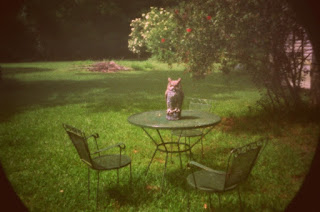I am a weather wimp! I freely admit it. I hate cold weather.
I don’t particularly like rain. I certainly
don’t like snow or anything that puts frozen water on the ground or on me. Are
you getting my drift?
This is why I haven’t been taking many pictures lately. The
weather has been – shall we say, disagreeable.
Fortunately I live in beautiful South Louisiana where such
disagreeable weather is less frequent and of shorter duration (when it does
occur) than almost anywhere else so I am looking forward to better weather
soon.
In the meantime I offer the photo above for your
consideration. This one shot with a Yashica FR-1 on Kodak BW400CN film during
one of my infrequent winter shooting sprees.
Last year I stumbled upon a deal I couldn’t pass up for a
Yashica FR-1. I had been given a bag with various accessories and a couple
lenses for another Yashica a few years back and have always wanted to reconcile
that bag of goodies by getting a camera to go with it. I resisted the urge
mainly because as a dedicated Pentaxian already suffering from GAS (gear acquisition
syndrome) I didn't want to over complicate my life by starting another camera system.
Recently however, my son has become interested in film
photography and I saw this as a way to reconcile the Yashica gear and get him
started with his own camera bag. So when I saw a FR-1 in great shape available
for less than $10 I just had to jump on it.
The Yashica FR-1 is a surprisingly sophisticated 35mm SLR manufactured
from 1977 to 1981. The big bright viewfinder has the apertures spread across
the top and the shutter speeds arrayed down the right side with the selection
indicated by a needle sliding along both scales. It also features a fully
automatic aperture priority TTL metering and exposure control system with full
manual override.
The “feather touch electromagnetic shutter release” allows
seamless shutter control from 4 seconds to 1/1000 of a second and can be used
with a number of accessories including wireless remote release (which I do not
have).
The Yashica FR-1 design was based on and includes many of
the features of the much more expensive Contax RTS. It uses the Contac/Yashica
mount and indeed this one has an excellent Carl Zeiss f1.7, 50mm lens.
I only shot one roll of film with this camera before giving
it to my son for Christmas but was really surprised and impressed with it, so
much so that I briefly considered keeping it for myself but reason prevailed.
This is a really beautiful camera with a great solid feel and perfectly placed
and arranged controls. It just feels good! The big bright viewfinder with all
the exposure information clearly shown and accurate aperture priority exposure
system makes using this camera an amazing experience.
I will try to post some more photos from this camera as my
son shoots more with it.






















